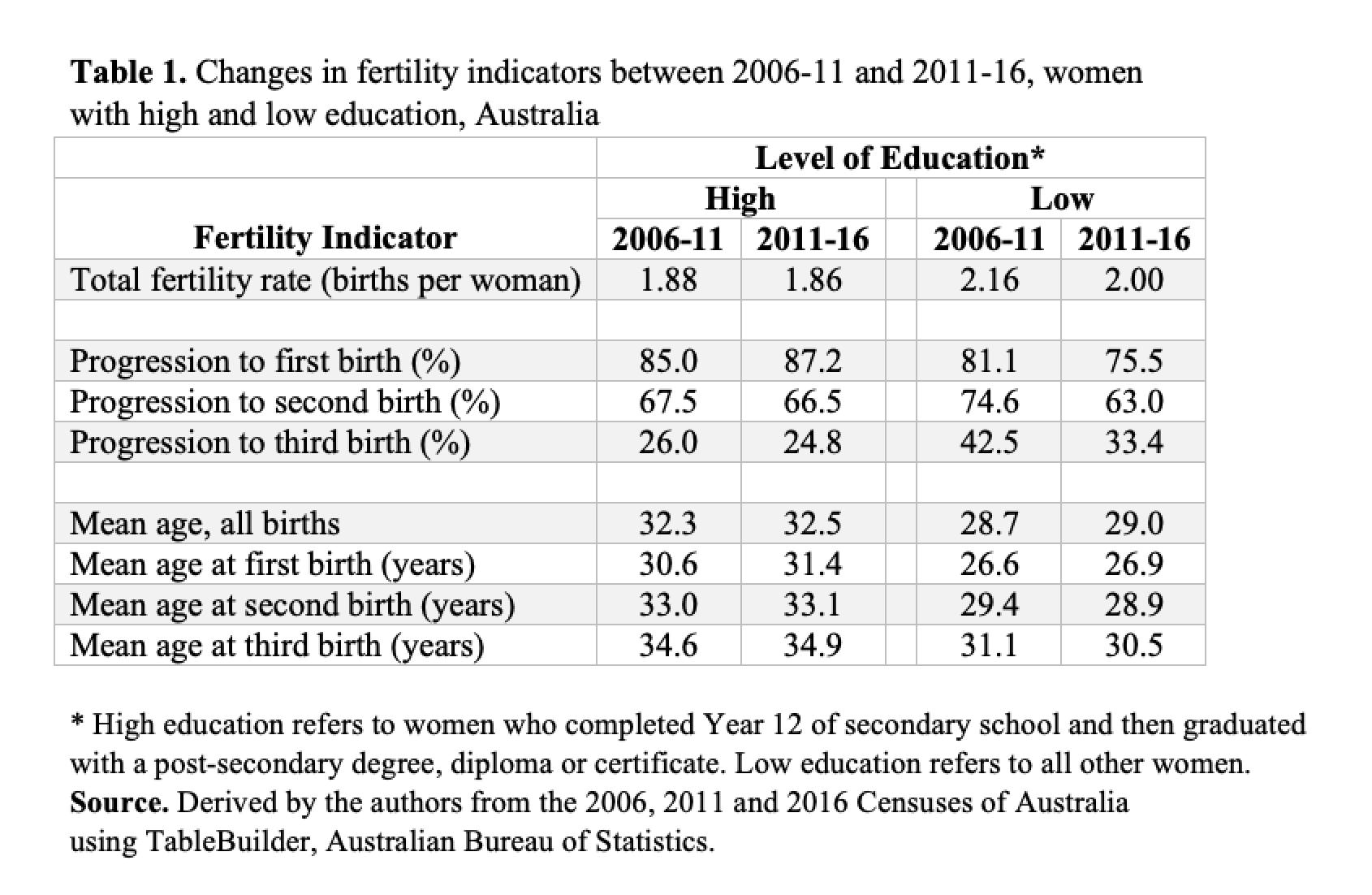
From 2006 to 2016, fertility in Australia remained constant for women with high education while it fell sharply for women with low education. Researchers at the ARC Centre of Excellence in Population Ageing Research (CEPAR) observe this trend may reflect the increasingly regressive nature of government support for families with children.
Fertility decline is stronger for the low educated
Peter McDonald, CEPAR Chief Investigator and Professor of Demography at the University of Melbourne, and Dr Helen Moyle show in a recent analysis published in the N-IUSSP journal, that the fall in fertility rates in Australia is more apparent among lower educated than among the higher educated women who have a post-Year 12 tertiary qualification.
 Using data from the Australian population census conducted between 2006 and 2016, the researchers examined the mean number of children born to women and the parity distributions of women by single years of age for the two education categories.
Using data from the Australian population census conducted between 2006 and 2016, the researchers examined the mean number of children born to women and the parity distributions of women by single years of age for the two education categories.
“We found, in Australia, the fertility decline is stronger for the low educated,” said Professor Peter McDonald.
“Across the two five-year periods, 2006 to 2011 and 2011 to 2016, the average total fertility rate in Australia for women with high education remained almost constant, falling by just 0.02 births per woman, but fell significantly by 0.16 for women with low education,” he said.
Correlation between falling fertility rates and family support policies
“Similar to Australia, in Nordic countries it has been observed that the falling fertility rates are more apparent among lower educated persons than among the higher educated. It was also found that support for the combination of work and family in Nordic countries may have underpinned the fertility of higher educated women but was less valuable to others. Our result for Australia mirrors the situation observed in those countries,” said Professor McDonald.
“The fertility decline is stronger for the low educated, and the socioeconomic circumstances of women with high and low education are very different,” he said.
“For example, in 2016, among mothers aged between 35 and 39 years, 25 per cent of those with high education were not employed compared with 42 per cent of those with low education. Strikingly, only 12 per cent of the mothers in that age group with high education were not partnered compared with 26 per cent of those with low education.”
“The balance of family support policy in Australia today is very much in favour of working women, and hence, more highly educated women. This is an enlightened policy that has enabled educated women to maintain a fertility rate of around 1.8 births per women while having a high rate of employment,” said Professor Peter McDonald.
“But while policy has been good for highly educated women, government support for women - and their children - who are not employed has moved strongly downwards since 2011.“
“Thus, as in the Nordic countries, the closing gap between the fertility rates of highly educated and low educated women may well be related to the relatively low level of government support for poorer people,” he said.
Journal article: Peter McDonald, Helen Moyle: In Australia fertility is falling only for low educated women. N-IUSSP.ORG July 1, 2019.
